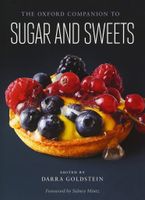Advertisement
meringue
Published 2015
As far back as the seventeenth century, beaten egg whites and sugar were molded into small open baskets called “paper coffins.” The renowned nineteenth-century French chef Marie-Antoine Carême was likely the first to use a pastry bag to pipe meringue, rather than shaping it with a spoon. Piped meringue made possible the creation of elaborate vacherins (large meringue shells) and other showpiece confections, such as Baked Alaska, a dramatic layer of meringue spread over an ice cream center and browned in the oven, one version of which is said to have been created for Delmonico’s New York restaurant to commemorate the Alaska Purchase. See baked alaska; carême, marie-antoine; and vacherin. The early twentieth century gave us the pavlova, a heavenly meringue cake that is topped with fruit and whipped cream from Australia and New Zealand, which was devised in honor of ballerina Anna Pavlova. See pavlova.


